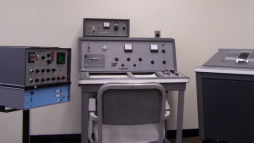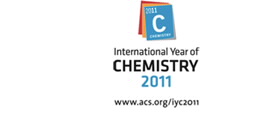FOR IMMEDIATE RELEASE | April 11, 2011
ACS honors development of NMR instrument as a National Historic Chemical Landmark in a Santa Clara, Calif., ceremony
WASHINGTON, April 11, 2011 — The workhorse technology that revolutionized how scientists and physicians do everything from synthesize new medicines, create polymers essential to computer technology, and make early diagnoses of cancers has received its due as a National Historical Chemical Landmark.
The American Chemical Society (ACS) honored the development of the Varian A-60 nuclear magnetic resonance (NMR) spectrometer as a National Historic Chemical Landmark during a ceremony on April 8 at Agilent Technologies, Inc., in Santa Clara, Calif.
Media Contact
Rachael Bishop
202-872-4445
r_bishop@acs.org
“NMR was a game-changing technology that allowed scientists a rapid and accurate way to assess the molecular structures of compounds, information that is essential if you are creating new medicines, plastics, even stronger metal alloys,” said Nancy B. Jackson, Ph.D., ACS President. “Truly, NMR deserves Landmark recognition as it speeded up chemical discovery by orders of magnitude.”
NMR has also allowed scientists a whole new world view into how large organic molecules, such as proteins and enzymes, behave. The structures of molecules aren’t static; they fluctuate, which is important to understand as scientists develop cures for diseases.
The most well-known application of NMR has been in developing the life-saving medical diagnostic tool known as MRI, (magnetic resonance imaging), which provides for early detection of conditions such as strokes, multiple sclerosis and cancer. It was Paul Lauterbur, Ph.D., a Stony Brook University chemistry professor, who employed the NMR technique (using an A-60) to create three-dimensional images that could depict, he predicted, malignant tumors. MRI is now a staple of medical diagnostics. ACS designated the discovery of MRI as a National Historic Chemical Landmark in a separate ceremony on March 11, 2011, at Stony Brook University in Stony Brook, N.Y.
On April 8, Abby Kennedy, Ph.D., Chair of the ACS Santa Clara Valley local section, presented a plaque on behalf of ACS honoring the development of the Varian A-60 to Nick Roelofs, Ph.D., president, Agilent Life Sciences Group.
“It is a great honor for the Varian A-60 spectrometer to be designated as a National Historic Chemical Landmark,” said Roelofs. “Innovation is the spark that drives everything we do at Agilent and ultimately creates the products and solutions that enable our customers to advance research and discovery.”
In 1948, Russell and Sigurd Varian founded Varian Associates (now part of Agilent Technologies, Inc.) to manufacture scientific instruments. Varian Associates was among the first technology companies to settle in what would become Silicon Valley in Northern California, along with Hewlett-Packard, predecessor to Agilent Technologies. Russell Varian held a long association with nearby Stanford University, and the proximity provided, as a company history put it, “the benefits of interchange with the various scientific programs in progress at the University.”
One of those benefits proved to be a relationship the company established with Felix Bloch, a physics professor who had headed the Stanford team that — along with a group at Harvard — first detected NMR signals in 1945. Although physicists first observed the phenomenon, chemists soon realized that NMR spectroscopy allowed them to perform non-destructive chemical analyses of samples to determine molecular identity and structure much faster and more simply than before.
Early NMR spectrometers were cumbersome instruments. But Varian Associates, capitalizing on its Stanford connection, acquired the patent rights from Bloch to produce NMR spectrometers from Bloch. The eventual result was the A-60, which became the instrument of choice in chemical laboratories because it was compact, reliable, stable, affordable and easy to use. A generation of chemists was trained to analyze samples on the Varian A-60 and used the instrument in a wide range of scientific advancements.
ACS established the National Historic Chemical Landmarks program in 1992 to recognize seminal historic events in chemistry and to increase awareness of the contributions of chemistry to the well-being of society. Other events recognized through this program have included the world’s first synthetic plastic, the discovery of penicillin, the development of Tide laundry detergent, and the work of historical figures such as Joseph Priestley and George Washington Carver. More information about the Landmarks program is available at www.acs.org/landmarks.
The designation of Varian A-60 as a National Historic Chemical Landmark took place during the Agilent Users’ Meeting before the 52nd Experimental Nuclear Magnetic Resonance Conference. For more information on new developments in NMR technology, visit the Agilent Technologies Newsroom.
###

ment for decades as it allowed chemists to deter-
mine molecular structures easily and quickly and to
follow the progress of chemical reactions.


